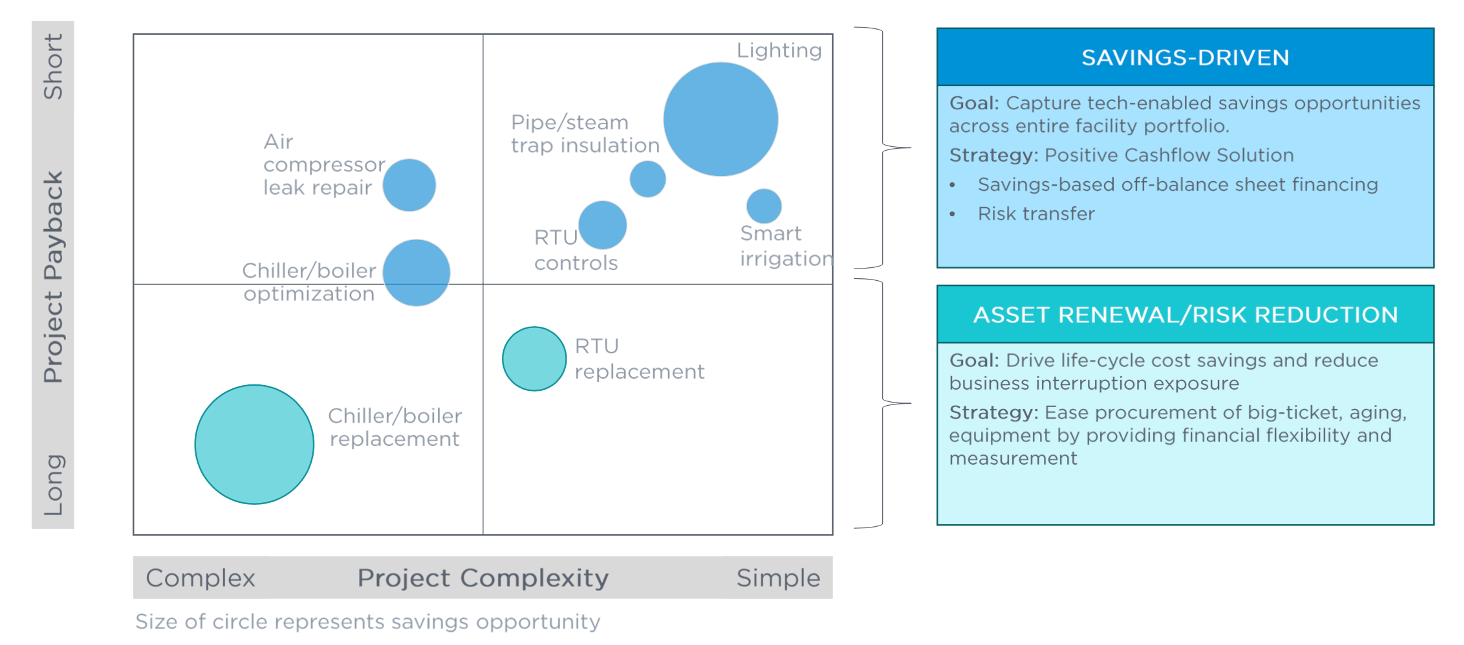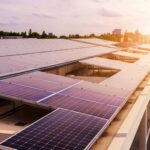Our October webinar’s panel discussion on ‘Optimizing the Low Carbon Pathway’ was rich with best practices and takeaways to kickstart the pursuit of carbon reduction. Envizi CEO and Co-Founder, David Solsky, highlighted the importance of accessible, legible energy and building systems data to drive decision making. Vice President of Renewables and Analytics Advisory at Edison Energy, discussed which renewable energy options are best for your business. While these two elements are important topics to explore, the low-carbon journey is not possible without the third element of the conversation: financing energy efficiency projects. John Rhow, Redaptive’s Executive Chairman and President, rounded out the conversation to help us understand creative financing options to bring our recommendations for best practice into reality. This article highlights key considerations shared by John during the webinar.
In discussions with building owners and operators, it is clear that the three main barriers to pursuing energy efficiency upgrades are related to upfront cost, concern about maintenance, and inherited risks of technology. You can’t confidently invest in projects if you are unable to easily measure the performance and return on those projects. Therefore we believe having a strong data foundation is critical for any business looking to reduce its energy consumption via capital expenditure-based projects. A data platform provides the insights you need to direct your investment decisions on energy projects. You’ll need funding for these projects, so if budgets are tight, a creative financing model incentivizes building owners and operators to pursue efficiency upgrades across their portfolio without the initial capital investment.
There is a range of creative financing models that address the upfront cost barriers to energy efficiency upgrades. As Redaptive’s John Rhow described in the webinar, a model that has the provider delivering Efficiency-as-a-Service (EaaS) can address many of the concerns of building owners and operators. This type of financing and delivery approach sees the finance provider take the cost of upgrades off the balance sheet and assume responsibility for all costs associated with the upgrade while allowing the customer – in this case a building owner – to see savings from the upgrades quickly. This type of financing model is becoming more popular because it overcomes the barriers that other mechanisms do not, providing resources along with capital and inheriting the performance risk and maintenance.
If this model is of interest to you, look for a provider that conducts a portfolio-wide data analysis to highlight the most impactful, measurable savings opportunities. As illustrated in this chart, shared during the webinar, EaaS is a creative financing model that is able to balance the ease of installation with the most impactful savings for quick return. This type of program can deliver measurable data-based savings that building owners had not experienced before.

EaaS is a unique approach to providing companies with upfront capital for their energy upgrade that is repaid – at no cost to the customer – through the energy savings on their utility bill. This performance is tracked with real-time energy metering to measure and verify the energy savings from the capital project. In the webinar, John spoke about how the billing method is akin to a PPA model, where energy savings are converted to dollars at an agreed-upon rate, and the performance-based savings of each upgrade are passed along to the client. Similar to a PPA, where a third-party owns the technology and inherits the risk, this is often a win-win because the organization is only paying for the projects as savings are realized – with no cost to themselves.
It is especially critical that the savings are monitored and accurately reported in a sustainability reporting platform to simplify your end of year reporting and for transparency across multiple stakeholders. This pursuit of accurate, traceable, and auditable data is core to our mission. If you’d like to learn how a solid data foundation and creative financing can deliver energy efficiency upgrades that support your transition to low carbon, reach out to me directly or watch the Smart Energy Decisions’ presentation of the Envizi webinar, “The Pathway to Low Carbon” on demand.
 As SVP – North America, Tanya March is responsible for Envizi’s business and partner development strategy for the North American market. As a founding employee at Envizi in 2007, she has played a pivotal role in developing Envizi’s extensive global client base. Tanya has a deep understanding of the technology underpinning Envizi and is skilled at working closely with clients and partners to deliver exceptional outcomes. Tanya brings to her role decades of senior executive experience in strategic business development and sales management.
As SVP – North America, Tanya March is responsible for Envizi’s business and partner development strategy for the North American market. As a founding employee at Envizi in 2007, she has played a pivotal role in developing Envizi’s extensive global client base. Tanya has a deep understanding of the technology underpinning Envizi and is skilled at working closely with clients and partners to deliver exceptional outcomes. Tanya brings to her role decades of senior executive experience in strategic business development and sales management.
NULL




